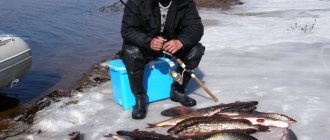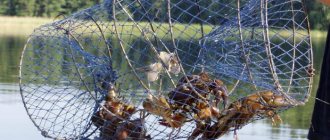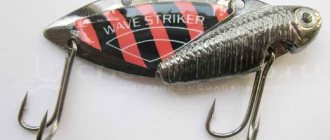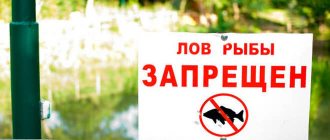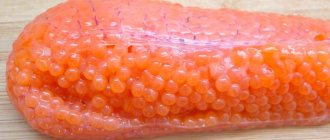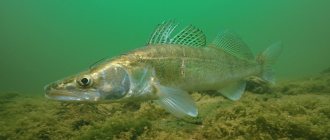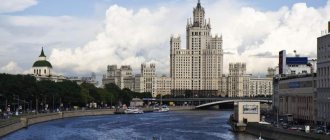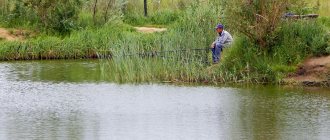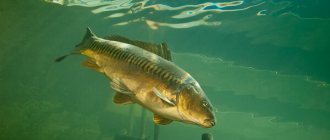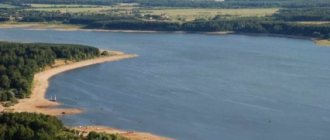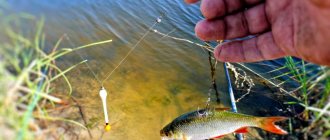Fishing is a fairly common hobby among men. But not everyone knows that Russia has its own rules of behavior during this process. For example, you need to consider the time of year before you start fishing. The thing is that at certain moments it is generally impossible to bring an idea to life. During certain periods of time, fishing in certain places (by any means) is prohibited. In some cases, you cannot use only specific gear. Spinning causes huge controversy. Fishermen use it quite often. But is there a ban on spinning fishing in Russia? And if there is one, what punishment should you prepare for? All features regarding this issue will be studied further.
Is there a right
The first step is to find out if there are any restrictions on spinning. The thing is that fishing is treated not only as a hobby, but also as a trade. After all, fishing can be both amateur and serious, commercial.
Therefore, many people wonder whether it is possible to fish with a spinning rod during the ban and beyond. Some say this is allowed. Some indicate that this device cannot be used during certain periods of time. Who to believe? To correctly answer the question posed, you need to understand what general fishing rules exist.
When is the best time to fish from a boat?
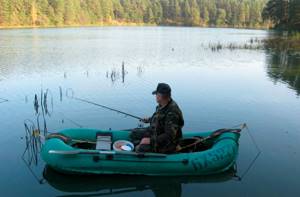
As a rule, fish bite best in the summer either early in the morning or late in the evening. During this period, fish move in schools around the reservoir in search of food. For fishing to be successful, it is better to use bait. You can buy it at a fishing store or prepare it yourself before going fishing.
The advantage of purchased bait is that it does not need to be prepared, just add a certain amount of water to achieve the desired consistency. Groundbait prepared at home also has a number of advantages. Firstly, it can be prepared no worse than store-bought, and secondly, it will cost much less. The only thing is that to prepare it you need to spend some of your free time.
If you feed the fish in advance, this can increase the efficiency of fishing significantly. At depths of up to 4 meters, the following are used for fishing:
- Jigs.
- Spoons.
- Malek.
- Live bait.
Trade or hobby?
For example, the type of fishery played a huge role. It has already been said that there are two options for the development of events - commercial and amateur fishing. The first is subject to strict prohibitions. Therefore, many people wonder whether it is possible to fish with a spinning rod in the spring and not only.
In general, it will not be possible to answer unambiguously and quickly. According to established laws, the main prohibitions apply primarily to commercial fishing. But some nuances of fishing play a role. For example, a situation may arise in which there are no restrictions on the use of spinning rods. At the same time, the fisherman decided to use a fishing boat to travel to a convenient place. In such a situation, punishment cannot be avoided.
Exact prohibitions
Therefore, it is recommended to take into account all the features of the upcoming fishing. In Russia there are currently restrictions regarding this process. For example, on how and where not to bring an idea to life.
Is it possible to fish with a spinning rod when it is prohibited? First of all, the fisherman must take into account the following restrictions:
- You cannot fish with electric fishing rods, nets or traps.
- The use of a large number of hooks is not recommended. Citizens can safely use only 10 pieces.
- There is a ban that does not allow the use of toxic substances while fishing. Applies to any type of fishing, constantly and everywhere.
- Fishing is prohibited near water pumps, dams, and locks. Not at all, even with an ordinary fishing rod.
- Catching regular fish does not require additional permission. But rare types can be caught only with a certain license.
It should be noted that the main prohibitory rules say nothing about spinning fishing. Is it really possible not to be afraid of a fine? If you follow the above rules, the likelihood of negative consequences from the fishing process is reduced to the maximum.
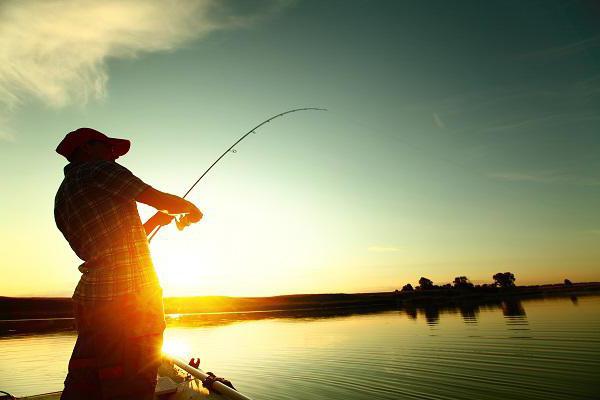
How to properly equip a spinning rod for fishing in May, what are the features?
Spinning rod equipment for fishing in May plays an important role when fishing. A fishing rod for a spinning rod should be selected based on the type of bait that will be used to catch fish. The lighter the rod, the more convenient it is to control the bait, and the spinning rod is more sensitive to bites.
When fishing using small baits, the number of fish caught directly depends on the weight of the spinning rod.
For fishing from the shore, it is recommended to choose a heavier rod. With this type of fishing, the rod is used for long-distance casting, which cannot be done with a light spinning rod.
The fishing line used to rig the spinning rod must match the weight of the bait and the size of the fish that you plan to fish.
In addition, when equipping a spinning rod, you need to take into account the behavior of fish in late spring.
- So, to catch pike, you need to choose a strong and durable fishing line, since this fish is very active in May.
- catch pike perch using a spinning rod up to 3 meters long, equipped with braid instead of fishing line.
- When fishing for catfish, the spinning rod must be equipped with braid that can withstand a weight of up to 40 kg. When catching catfish on a donk, the hook must be very strong.
- bream in May using a long rod (up to 7 meters).
- The methods of catching Ide are different from others. If you want to start a battle with this fish, read the article.
By time
Is it possible to fish with a spinning rod when it is prohibited? This question, as already mentioned, interests many fishermen. In general, there are no temporary restrictions on fishing in Russia as such. Citizens can carry out this process in the morning, afternoon, and evening. Even at night if desired.
Only during certain periods, or rather seasons, do fishing restrictions apply. When exactly? To spawn. For fish, as a rule, this period occurs in the spring. Therefore, in the spring there is a ban on fishing almost everywhere.
True, this rule applies mainly to commercial fishing. But amateurs are given more opportunities. Is there any ban on spinning fishing in the spring or during spawning?
What types of aquatic life are subject to restrictions?
Depending on the region, certain species are not allowed to be hunted:
- In the Moscow region it is prohibited to catch bersh, catfish, trout, crayfish, white-eye, grayling and lamprey;
- In the Kama region you cannot catch sterlet, taimen and Russian sturgeon;
- Throughout Russia, restrictions have been established on fishing for bream, asp, pike perch and pike;
- It is prohibited to use pike, bream or pike perch as bait;
- Catching some types of fish is completely prohibited. For example, Atlantic sturgeon (listed in the Red Book). Aral salmon and pseudoshovel are rare species and are protected.
Permission
Again, to fully understand the issue under study, it is necessary to look at the types of fishing that are allowed and prohibited. In fact, the process being studied, presented in the form of a hobby, is not prohibited by anyone. Citizens in Russia have the right to fish in ordinary bodies of water.
What can you use to fish? During spawning and spring, commercial fishing is prohibited. However, you are allowed to use the following devices:
- Fishing rods with floats are allowed. Not to be confused with homemade ones, they are subject to a ban.
- You can use gear with a number of hooks not exceeding 10 pieces.
- Mugs and girders are components of amateur fishing. They are approved for use.
- The ban on fishing with spinning rods does not apply. This device is attributed to amateur gear.
What does it mean? No one has the right to fine a citizen for using a spinning rod in the spring or during spawning. The only exceptions are the previously mentioned cases, when in principle it is impossible to fish.
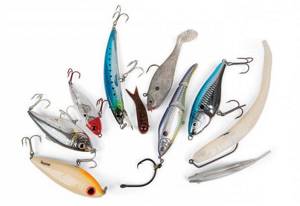
Effect of restrictions during spawning
All of the above does not mean that there is nothing to be afraid of. In fact, an amateur fisherman will still have to follow certain rules during spawning. Otherwise, he may be fined, as well as confiscate the fishing gear and other devices that were involved.
Among all the existing rules and restrictions during fish spawning, you should be guided by the following points so as not to receive a fine and not be afraid of confiscation of fishing gear:
- You cannot fish using any type of swimming equipment. No boats or boats. Fishing is allowed only for amateurs, from the shore.
- You cannot catch fish in spawning grounds under any pretext or anything. This rule occurs mainly in the spring.
- Fishing is allowed with only one fishing rod and one hook (including a spinning rod).
- In any reservoirs that are not considered spawning reservoirs, the process under study can be carried out. Moreover, at any time of the day, but taking into account the already known rules.
In Russia there is also a list of individual places where no fishing is allowed at all. There is a ban on spinning fishing. But nothing more. This point needs to be taken into account. Fortunately, there are very few such areas. Therefore, fishermen should be guided by general rules.
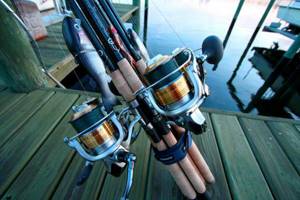
Duration of bans
The start and end dates of the ban are different, most often they are associated with spawning. This phenomenon begins in spring and ends in summer. For example, fish spawning in Bashkiria occurs from early May to mid-June. But this does not mean that you cannot come to the river with a fishing rod. It’s just that during spawning some restrictions are set:
- Fishing is allowed if you have one fishing rod;
- One hook with size less than 10 is allowed;
- Daytime fishing is permitted. Nighttime is prohibited;
- Fishing is allowed only on the shore, without boats or vessels.
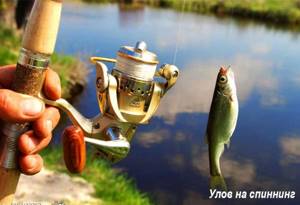
After the ban is lifted, these restrictions are also canceled.
In count
There is no ban on fishing with spinning rods in most cases. Citizens can engage in such activities for amateur purposes almost always and everywhere. No one is able to fine a fisherman if, during the spawning period, for example, he uses one fishing rod with a spinning rod in a place that is not a spawning reservoir. However, this does not mean that the fisherman has nothing to fear.
The thing is that in Russia there are some fishing standards. If a person exceeds them, there is a fine. It doesn’t matter what you used to fish with. The main thing is that the established limits are not exceeded.
Now you can focus on the following standards:
- One person can catch 5 kilograms of fish per day. There is only one exception here - when the weight of one catch (1 fish) exceeds the specified limit.
- The export of fish must be carried out taking into account the fact that it is impossible to transport more than double the norm for 2 days of fishing. Moreover, it does not matter in what form the catch will be presented.
- Minnows, ruffe, and bleak can be caught with a spinning rod without fear. For these species of marine life there are no restrictions on export and catching.
- Crayfish are allowed to be caught within certain limits. The ban on fishing with spinning rods does not apply here, but a person should not catch more than 30 crustaceans per day.
- Commercial fishing, as already mentioned, is carried out only with a license. Otherwise, the citizen will face not only a fine, but also the confiscation of devices involved in the process.
There are no more limits or restrictions regarding established standards. Is it just the length of the individuals? In Russia, attention should be paid not only to fishing rules, but also to the fish caught. If the length of an individual exceeds the established standards, it will be required to be released.
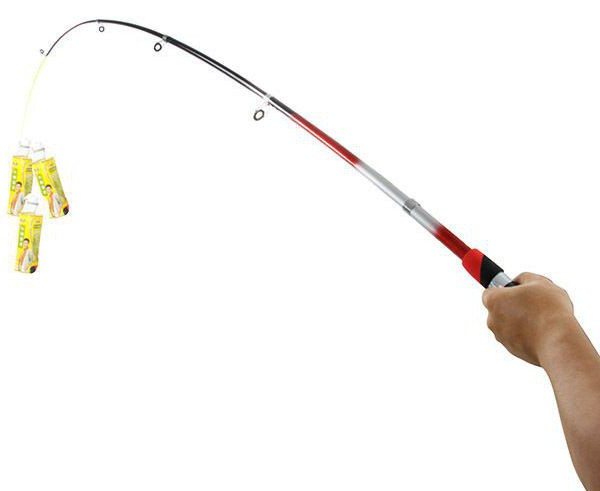
Ban on fishing based on quantity - acceptable values.
Limits are also set on the number of fish caught:
- One person cannot catch more than 5 kilograms of fish per day;
- You can export fish if it does not exceed the catch in two days (that is, 10 kilograms). This indicator does not depend on its type (raw, dry or dried);
- There are no restrictions on ruff, minnow or bleak;
- If you don't have a license, you can't catch a lot of fish;
- The number of crayfish caught cannot exceed 30 in one day.
By fish length
There is no ban on spinning fishing as such. Moreover, you can use this device both in the spring and during spawning. No one is able to fine a citizen for this unless any other rules are violated.
The length of the fish requires special attention. What are the maximum permissible standards required to be observed in this regard? Fishermen must release fish that exceed the following maximum lengths:
- 9 centimeters for crayfish;
- 15 - herring, podust, trout;
- 20 - barbel, chub;
- 32 - pike;
- 40 centimeters - burbot and catfish.
The list doesn't end there. Only these individuals are most often caught. Some fish length standards are regulated at the regional level. This factor will also have to be taken into account.
Fishing restrictions depending on the size of the individual
The length of the fish is measured from the mouth to the rays of the tail. Crayfish have from the middle of the eyes to the end of the tail.
- Carp - 30 centimeters;
- Crayfish - 9 centimeters;
- Pike perch - 38 centimeters;
- Burbot - 40 centimeters;
- Pike - 32 centimeters;
- Asp - 45 centimeters;
- Catfish - 40 centimeters;
- Golovan - 40 centimeters;
- Carp - 24 centimeters;
- Rybets - 22 centimeters;
- Taran - 16 centimeters;
- Grass carp - 45 centimeters;
- Bream - from 17 to 20 centimeters. It depends on where you are fishing;
- Trout - 15 centimeters;
- Podust - 15 centimeters;
- Bersh - 25 centimeters;
- Barbel - 20 centimeters;
- Herring - 15 centimeters;
- Silver carp - 50 centimeters.
If the length of the individual is shorter, it must be released back. Avoid damage.
Fines
Is it possible to fish with a spinning rod when it is prohibited? Yes, amateurs have the right to do this. You just need to follow a number of generally accepted rules. If they are not taken into account, then the citizen has the right to be fined. Not for the direct use of a spinning rod, but for some other reason.
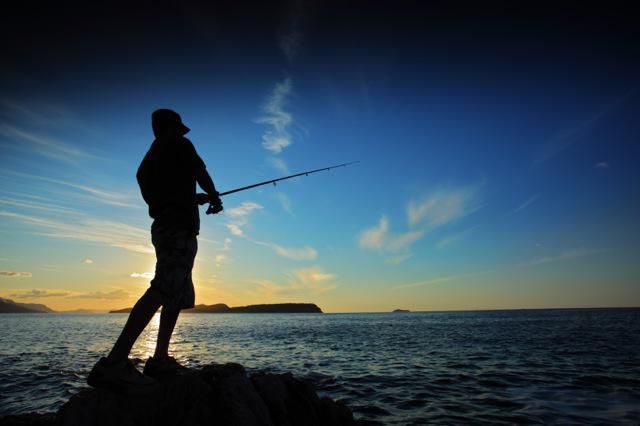
What fines may be imposed in this or that case? In Russia, fishermen most often encounter the following cases:
- Fishing during spawning. It is punishable by payment of up to 30,000 rubles. The exact amount will be announced in a specific region for each case.
- Catching carp, pike, crayfish and bream in the spring, during the spawning period. In this situation, everything depends on the number of individuals caught. Crayfish will cost 42 rubles, bream - 25, carp, pike and carp - 250 rubles per fish.
- For parking a vehicle (most often a car) near a body of water, a payment of up to 4,000 rubles is required. The exact amount is set at the regional level.
- The use of prohibited fishing means causing damage on a large scale will entail a fine of 100 to 300 thousand rubles. Or you can wait for arrest for up to six months.
These are not all fines, but those listed are the most common. Most payments are governed by the rules of a particular region.
Fishing in 2021: new rules, deadlines, prohibitions
In the basins of the Kichera and Upper Angara rivers, Lake Irkana and the Angarsky Sor Bay of Lake Baikal - from May 1 to June 30.In the North Baikal fishing area of Lake Baikal - from August 20 to November 15, in the river. Upper Angara - from September 10 to November 15, in the river. Kichera - from September 20 to November 15.
In lakes Arangatui and Small Arangatui and the Arangatuisky source channel connecting the lake. Small Arangatui with Chivyrkuisky Bay, at distances of less than 3 km, measured to the right, left and deep into Chivyrkuisky Bay from the mouth of the Arangatuisky channel - from the melting of the ice to June 20 and from August 10 to November 10.
In the Bolshoi Chivyrkui and Bezymyannaya rivers, at distances of less than 3 km, measured to the right, left and deep into the Chivyrkuisky Bay from the mouth of the Bolshoi Chivyrkui River - from August 10 to November 10.
In the Chivyrkuisky Bay of Lake. Baikal and the rivers flowing into it - from the melting of ice to June 20.
In the coastal zone 2 km wide around Baklaniy Island, located in the Chivyrkuisky Bay of Lake Baikal, measured from the coastline of the island, from the period of freeze-up until the melting of ice.
In the river basin Barguzin, as well as at distances of less than 3 km, measured to the right, left and deep into the Barguzin Bay of Lake Baikal from the mouth of the Barguzin River - from the melting of ice to July 5 (with the exception of the catch of carp (residential form)) and from August 15 to October 31.
In the lake Brass - from May 10 to July 5.
In the bays of Sor (Posolsky Sor) and Sor-Cherkalovo (Istoksky Sor) of Lake Baikal and the rivers flowing into them; in the Selenga River, in lakes and channels located in its delta - from April 25 to June 30.
In the Proval Bay of the lake. Baikal and its coastal zone 1 km wide, measured from the coastline running from the most distant point towards the lake, Cape Oblom, to abeam a point located at a distance of 4 km towards the village of Enkheluk - from April 25 to October 31.
From August 1 to October 15 - on the lake site. Baikal Limited:
- from the south - a straight starting line connecting the point of Cape Goloustny that is most distant towards the lake and the mouth of the Boyarskaya River (near the village of Boyarsky);
- from the north - a straight starting line connecting the points of capes Oblom and Aya that are most distant towards the lake;
- from the west - a line running along the shoreline of the lake connecting the indicated points of capes Goloustny and Aya;
- from the east - a line running along the shoreline of the lake, connecting the mouth of the Boyarskaya River with the indicated point of Cape Oblom.
In the bays of Sor (Posolsky Sor) and Sor-Cherkalovo (Istoksky Sor) of Lake Baikal, in the Selenga River - from August 15 to November 15;
From April 25 to June 30 - in the areas of the Maloye More straits and the Olkhon Gates of Lake. Baikal:
- in Mukhur Bay in an area limited: from the north - by a straight starting line connecting the points of capes Antukhay (Ontkhoy) and Ulan that are most distant towards the bay; from the south - a line connecting the indicated points and passing along the coastline of the bay;
- in Kurkutskaya Bay in an area limited: from the east - by a straight starting line connecting the points of capes Shibete and Ulan that are most distant towards the Maloe More Strait; from the west - a line connecting the indicated points and passing along the coastline of the bay;
- in the bays of Bazarnaya, Second (Malaya) Kurkutskaya in an area limited: from the east - by a straight starting line connecting the points of capes Gakhte and Khargante that are most distant towards the Olkhon Gate Strait; from the west - a line connecting the indicated points and passing along the coastline of the bay;
- in Zagli Bay in an area limited: from the west - by a straight starting line connecting the points of capes Ulyatai and Zabro (Khargante) that are most distant towards the Olkhon Gate Strait; from the east - a line connecting the indicated points and running along the coastline of the bay.
From September 25 to January 20 - in the area of the Maloe More and Olkhon Gates of Lake Baikal, limited to:
- from the north - a straight starting line connecting the points of capes Hadarta (Hadartuy) and Khorgoy that are most distant towards the Maloe More Strait;
- from the south - a straight starting line connecting the most distant points of the Zabro (Khargante) and Yubukhan capes towards the Olkhon Gate Strait;
- from the west - a line running along the coastline of the western coast of the above-mentioned straits, connecting the indicated points of capes Hadarta (Hadartuy) and Yubukhan;
- from the east - a line running along the coastline of the western coast of Olkhon Island, connecting the indicated points of capes Khorgoy and Zabro (Khargante).
Lakes of the Eravno-Kharginsky system and in the Kholoy River, connecting the system of Eravno-Kharginsky lakes with the Vitim River - from May 5 to June 30.
In the lake Gusinoe and its tributaries (except for freshwater perch fishing) - from May 1 to June 30; freshwater perch - from June 1 to June 30.
In the r. Bayan-Gol, in the Tsaidam and other lakes of the Bayan-Gol river floodplain - from May 1 to July 20.
In the rivers Uda, Temnik, Dzhida and their tributaries - from April 20 to June 30.
In the rivers Khilok, Chikoy and their tributaries - from April 20 to June 30 and from September 15 to October 31.
In the Big and Small Amalat rivers and their tributaries - from May 1 to June 20.
In objects and their parts of the Tsipo-Tsipikan (Bauntov) system:
- in lakes Oron and Kapyluchikan (Small Kapylyushi) - from June 1 to July 10 and from October 1 to November 15;
- in the river Nizhnyaya Tsipa, in the area from the mouth (including the mouth) of the Ugolnaya (Uligli) River to its confluence with the Vitim River, as well as in the Verkhnyaya Tsipa and Tocha rivers - from September 1 to October 31;
- in the Oronskaya channel connecting the lake. Oron (Big Kapylyushi) and Kapyluchikan (Small Kapylyushi); Bogdanovskaya channel connecting the lake. Busani with the Lower Tsipa River - from May 20 to June 30 and from September 1 to October 31;
- in the Busanskaya and Mogoy channels connecting the lake. Busani with the Lower Tsipa River; the Tretyakovskaya channel, connecting the Tretyakov Lakes with the Nizhnyaya Tsipa River; in lakes Gulinga, Busani and Tretyakovskiye - from May 20 to June 30;
- from March 10 to June 10 - in the lake. Oron (Bolshoye Kapylyushi) in an area limited: from the east - by a line running along the shoreline of the lake, connecting the point that is conventionally the confluence of the Oronskaya channel into Lake Oron (Bolshoye Kapylyushi), with the most distant point of the lake to the south, located on the specified line ; from the west - a line equidistant at a distance of 1 km from the above line (running along the shoreline of the lake); from the north and south - by straight original lines connecting the above points with the points that are the places of perpendicular intersection of these straight original lines with the above-mentioned equidistant lines;
- from March 10 to June 10 - in the lake. Kapyluchikan (Maloe Kapylyushi) in an area limited: from the west and east - by straight lines equidistant at a distance of 0.5 km from the straight baseline connecting the point of Cape Boycha that is most distant towards the lake and the point that is conventionally the confluence of the Nizhne-Okunevskaya channel in the lake Kapyluchikan (Small Kapylyushi); from the north and south - by lines running along the shoreline of the lake. Kapyluchikan (Small Kapylyushi), connecting the above straight lines;
- from March 10 to June 10 - in the lake. Dorong.
In the Argun, Onon rivers and their tributaries - from April 10 to May 31.
In floodplain lakes and channels of the Argun and Onon rivers - from April 10 to June 30.
In the rivers Chara, Vitim, Olekma and their tributaries - from May 1 to June 30 and from September 1 to October 15.
In the floodplain lakes of the Chara, Vitim, and Olekma rivers - from May 20 to June 30.
In the Ingoda, Shilka rivers, their tributaries and floodplain lakes, in the lakes of the Ivano-Arakhlei group and their tributaries, in the lakes of the Amur River basin - from April 20 to June 20.
In lakes Bolshoye Leprindo, Maloye Leprindo, Nichatka, Amudisy of the China River basin - from May 15 to June 30 and from September 1 to October 31.
In all objects of the Angara and Yenisei river basins, with the exception of the Bratsk and Ust-Ilimsk reservoirs and the rivers flowing into them - from May 1 to June 15.
In all objects of the river basin. Lena and in the Mamakan reservoir - from May 15 to June 30.
In the Bratsk and Ust-Ilimsk reservoirs and the rivers flowing into them using cast seines - from May 1 to June 30.
In the straits of the Small Sea and the Olkhon Gates of the lake. Baikal using cast seines - from the freeze-up period to April 1.
From October 1 until the ice melts - in wintering pits.
From September 1 until the freeze-up period - whitefish (freshwater residential form) in objects located in the Irkutsk region.
From May 1 to June 30 - pike, ide and bream (residential form) in Lake Kotokel.
From April 25 to June 25 - grayling, lenok, taimen everywhere.
From May 1 to June 15 - pike in the Irkutsk, Bratsk and Ust-Ilimsk reservoirs and the rivers flowing into them.
From August 20 to November 20 - Baikal omul and peled in the rivers flowing into the Bratsk and Ust-Ilimsk reservoirs, in the Angara, Irkut, Kitoy, Belaya rivers and their tributaries.
From May 15 to July 31 - Artemia (at the cyst stage) everywhere.
From November 20 to December 31 - burbot in the objects of the Trans-Baikal Territory.
conclusions
What conclusions can be drawn? You cannot be fined for fishing with a spinning rod. In fact, you can go fishing using this device. You just need to comply with all the previously mentioned restrictions.
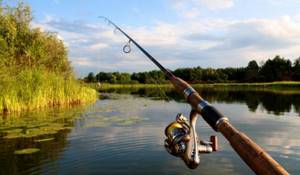
Thus, there is no need to be afraid of punishment. Conscientious fishermen will be able to fish with a spinning rod without any problems both during normal times and during prohibitions. Nothing special is required from citizens in Russia.
Reasons for the ban

Recently, fishing in rivers and lakes has been massive and uncontrolled, which is why the number of fish has sharply decreased. In order to somehow restore the number of fish through their reproduction in the natural environment, there are prohibitions. This is done by services that monitor the level of biological resources. These bodies monitor the implementation of legal acts and have the right to impose fines in case of violation.
Particular attention is paid to the process of spawning, as well as preparing the fish for wintering. Catching crayfish is also prohibited during the molting period, when caviar is formed. During this period, the use of any boats, as well as certain types of gear, is prohibited. Only fisheries protection staff are allowed to move around the reservoir.
MONOLOGIES ABOUT FISHING #6. BAN ON FISHING.
During this period, it is prohibited to hold any competitions, and blasting operations and mining in spawning areas are also prohibited.
Therefore, fishing during periods prohibited by law is strictly punishable by law. For fishing during these periods, it is possible to receive a serious fine or prison sentence. This is directly stated in the relevant documents.
